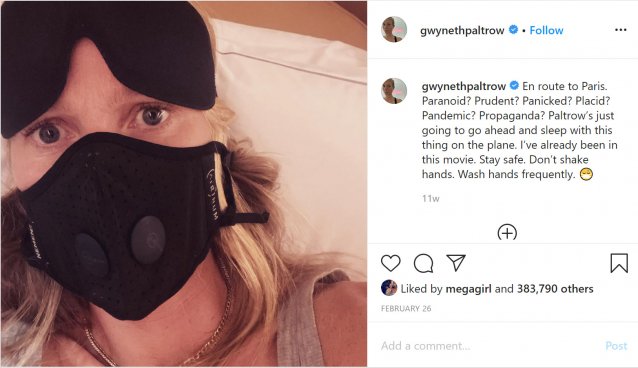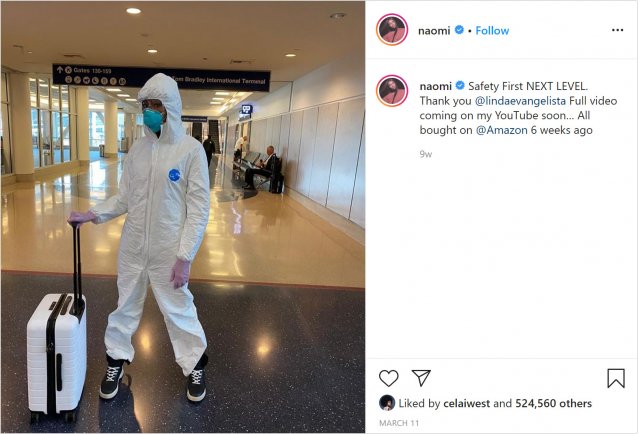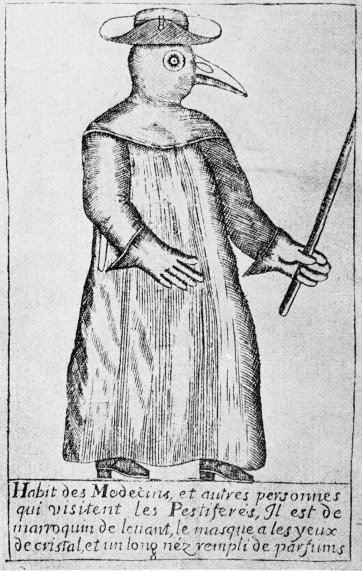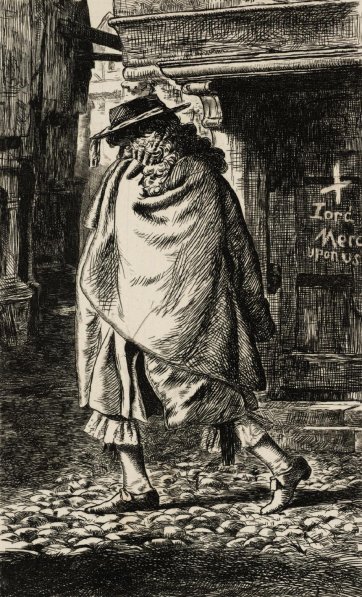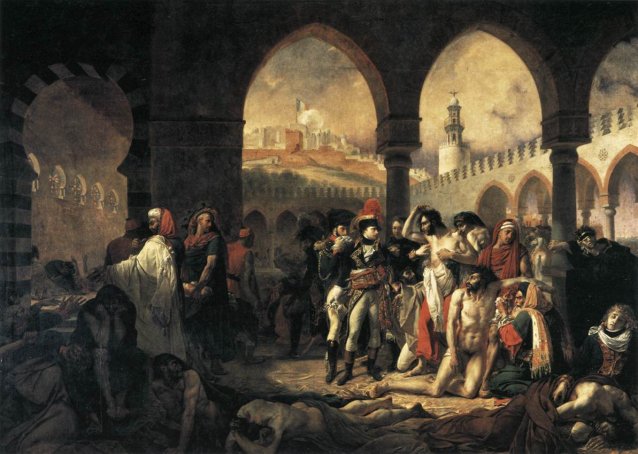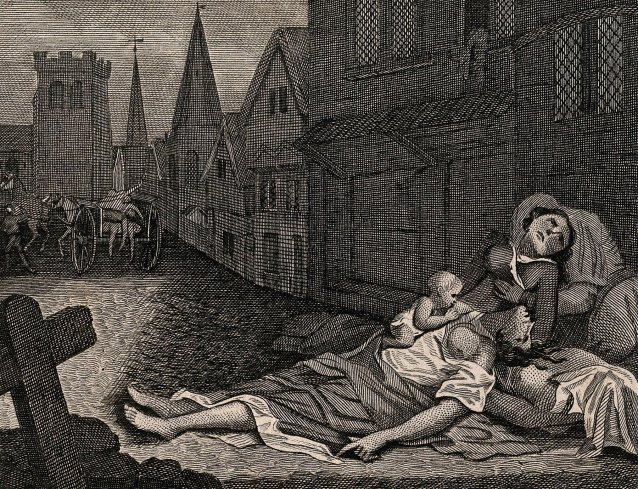The composition of these images in turn draw parallels with the macabre and vivid artworks of the various plague epidemics that decimated populations in waves across the last thousand years. Two women lying dead in a London street during the great plague of 1665, one with a child who is still alive (after Robert Pollard) exemplifies this. Here is the Christ-like figure, a fence post standing in as a cross, a cart full of bodies, and the horror of the orphaned babe still feeding. The suffering in these images is real, immediate and inescapable. There is a vast distance between present day images of mask-clad loners haunting empty city centres, and the bodies piling up on the streets in 1665. These days we take so much of the organic messiness of life and death offsite (birth, ageing, terminal illness, death – even war is fought with drones) that we have developed an inability to look directly.
Suffering out of sight
The COVID-19 pandemic has left us with a thousand images of hidden suffering: behind face masks, behind pixellated screens, inside repurposed refrigerated trucks, beneath hazmat suits, and under white sheets on gurneys. Surely the most painful irony of this tragedy is that loved ones are unable to physically be with their family at the moment of bereavement. There is also the creeping dread of learning the reality of the pandemic’s toll on developing countries, hidden from us by geography, isolation and ethnocentric mainstream news. When will we see greater dissemination of images from non-western countries without the resources to carry out social distancing? How will we respond?
Sheltering in place, the majority of Australians have had the luxury of becoming a little bored, perhaps. Maybe we’ve been drowning under the weight of home schooling and/or working from home. Perhaps we’ve never spent this much uninterrupted time with our immediate families! These are all valid experiences, and I am grateful to count them among mine, but an undertow exists – the feeling that something momentous has been occurring elsewhere, and occurring ‘right now’.
The continuing emergence of an extensive array of images – portraits of this time – will complete the picture for us all.

